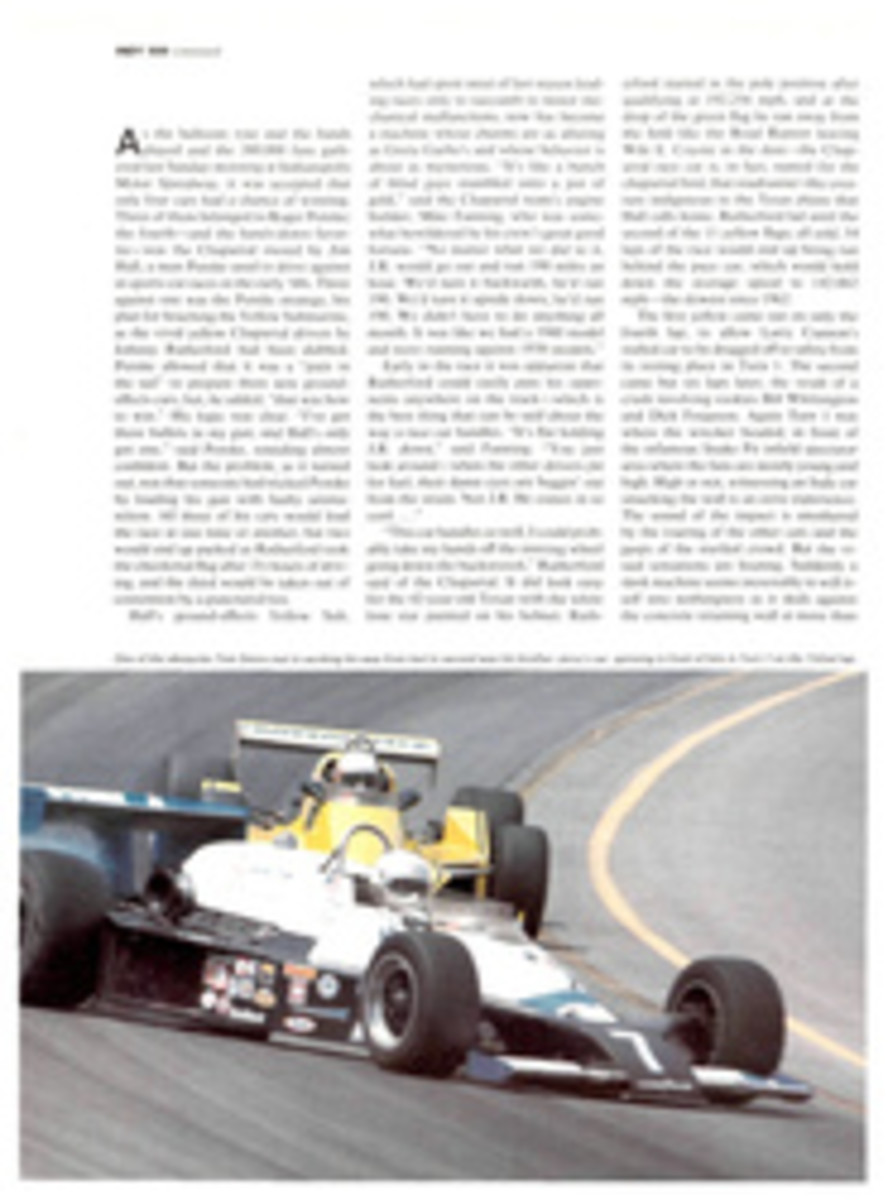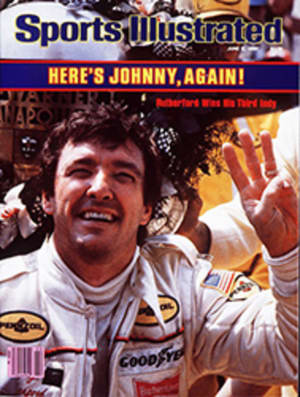
Judgment at Brooklyn
When Consolato Errico was an eighth-grader in Brooklyn, N.Y., his teacher asked him what he'd like to be when he grew up. "I want to be a jockey," Errico said, "and that's all I'll ever want to be." The teacher said, "Consolato, we can't bring horses into the school to teach you that. You better think about doing something else." But Errico remained adamant in his ambition, and his mother was called to the school for a conference with her son and the teacher. It was decided that Consolato would study bookkeeping at Roosevelt High School. "I hated bookkeeping," he says.
In 1942, at age 21, Errico went to work on the New York racetracks, as a hot walker in the employ of Preston Burch, one of racing's finest trainers. Following a tour of military service, he finally got to ride his first race at the age of 24, fulfilling a dream that had started when, at the age of 10, he began filling giant scrap-books with pictures of famous jockeys.
Eventually, Errico grew into a legend of sorts in New York racing circles, as well as a curiosity. He dressed well and became a magnificent dancer, twisting many nights away in the 1960s. He was an excellent shortstop on the jockeys' softball team, married a gorgeous Copacabana girl and was befriended by Jockey Club members, social pretenders, politicians, sportswriters and two-buck horseplayers. He always had entrèe to the best racing parties. Had a modeling agency wanted the perfect jockey, it would have selected Errico. He looked the way a jockey should look. Indeed, he once did appear in an ad—for the New York Racing Association.
But as a race rider, things always seemed to go wrong for Errico. He was suspended more than 50 times for rough riding and suffered a series of serious injuries to his hips and ribs and pelvis. While he never rode in the Kentucky Derby, Errico did have some good days on good horses. The most prestigious race he ever won was the 1949 Travers on Arise.
Everyone called Errico "Scamp," and he loved the nickname. "I got it when I was a kid because I was a scamp, always in trouble," he says. Along the way he changed his first name from Consolato to Con.
Last week Con (Scamp) Errico, 58, was in serious trouble, having been swiftly convicted by a jury in a federal court in his old hometown on a racketeering charge based on the bribing of other jockeys to fix races in New York State in 1974-75. He could be sentenced to as much as 20 years in jail and fined as much as $25,000. Better he should have stuck to bookkeeping.
Errico is the 23rd jockey, gambler, organized crime figure, trainer or owner found guilty on charges related to race fixing in state and federal cases since Anthony Ciulla (SI, Nov. 6, 1978), a convicted fixer himself, alleged that there was a massive race-rigging conspiracy in the mid-1970s. Sixteen others pleaded guilty to similar charges and seven more are fugitives. Nine were acquitted, six had their cases severed and two wound up with hung juries. About 100 races, it turns out, were rigged in five states, at Pocono Downs, Garden State, Suffolk Downs, Detroit Race Course, Hazel Park, Aqueduct and even Saratoga, the so-called Dowager Queen of the American Turf.
The Brooklyn jury deliberated less than five hours in convicting Errico after a six-day trial. He was, according to the U.S. Department of Justice, one of the key men in a scam of incredible proportions in New York. The department's Organized Crime Strike Force maintains that in 1974-75 a group of gamblers, working for organized crime elements, won huge exacta and trifecta bets on rigged races and lugged hundreds of thousands of dollars out of New York tracks.
Errico's trial proved to be the most spectacular of the cases yet to reach court, because many of the sport's outstanding performers were also accused of participating in the fixing of races. The Strike Force will now try to get Errico to cooperate in subsequent investigations involving jockeys he is suspected of bribing.
Errico was convicted, for the most part, on the testimony of three other riders: Jose Amy, Mike Venezia and Ben Feliciano. Feliciano was convicted of race fixing in Maryland in 1975 in an unrelated case. Testifying under immunity, they said Errico gave or offered them bribes ranging from $1,500 to $7,500 to "hold" their horses. But it was Amy, whose words were spoken in Spanish and translated to the jury, who was the most compelling witness against Errico.
Amy, 26, was the 16th-leading rider in the country last year, having won purses worth more than $2.6 million. He is 5'3", weighs 110 pounds, was born in Santurce, Puerto Rico and was the leading apprentice at San Juan's famous El Comandante racetrack in 1972. The next year he came north to begin his career in the continental U.S. He testified that he met Errico in various New York jockeys' rooms and, after refusing a couple of bribe offers, was threatened by Errico before finally accepting his first $1,500 fee, in the ninth race at Aqueduct on March 5, 1974, when he rode 2-1 favorite Prince Stoic, who finished sixth. At that time Errico was allowed in the jocks' rooms under a rule then in force that allowed any licensed member of The Jockey's Guild to use the facilities. Not brought up in the trial was the fact that in 1972 Errico had taken only two mounts; in 1973 one; in 1974 11, and in 1975 two. Errico's total purse earnings plus his riding fees in those four years barely exceeded $900, but he maintained his access to the jockeys' rooms.
During his time on the stand, Amy maintained that other jockeys had discussed fixing races in his presence, and he reeled off a list of names, many of which had been cited by Ciulla. Ciulla also had said that Errico had been the intermediary in his own New York dealings.
The names that came from Amy's lips caused a hush in the courtroom. He said he had talked about fixing races with Angel Cordero Jr., Jorge Velasquez, Braulio Baeza and Jacinto Vasquez, four of the six top money-winning jockeys in U.S. racing history. He also named one of Forego's riders, Heliodoro Gustines; Jean Cruguet, the jockey for Seattle Slew; Eddie Maple, the last jockey to ride Secretariat; and Venezia, Eddie Belmonte, Marco Castaneda and Jaime Arellano.
Amy has been barred from the grounds of New York Racing Association tracks, and he will appeal the suspension of his license by the New York State Racing and Wagering Board. A suspension in one state is usually honored by racing authorities in other jurisdictions.
The seven races for which Amy says he accepted fix money—to hold horses back, take them wide or fail to warm them up properly before a race—were all trifecta events, with the ultimate payoffs ranging from $911 to $5,394 for each winning $2 trifecta ticket. While Ciulla, a key government witness in the New Jersey, Massachusetts, Pennsylvania and Michigan cases, did not testify in Errico's trial, he was available to the prosecution in Brooklyn and, according to law-enforcement sources, could testify in future cases.
Errico's conviction poses many questions about horse racing's ability—or willingness—to police itself. Racing's management not only failed to lead, but it also did not follow up information generated by others. It just plain got out of the way and let federal agencies do its work for it. In fact, one person close to the investigation said the New York Racing Association "would have been happy to see the whole thing go away and die." Not only did the management of many racetracks, as well as the membership of the Jockey Club, fail to protect its customers from crimes involving millions in lost wagers, but it failed to protect the trainers and owners of horses performing in races, too. It is a shameful record. Only after Amy's testimony did the New York State Racing and Wagering Board announce that it would hold full-scale hearings into the charges.
But perhaps the public has already gotten wise to how racetracks are run, because the hard evidence shows that from 1976 to 1979 total attendance at the 89 U.S. tracks tumbled an average of 45,564 people per day. Though allegations that races had been rigged were made nearly two years ago, racing's leaders have not taken the initiative to examine this particular problem and figure out how to correct it.
The next thing certain to happen is that more trials and hearings will be held—and more of racing's silks may be sullied. Then stories will appear about tighter security at tracks and in-house investigations, but all that will merely be a matter of locking the barns after the races have been stolen. The conviction of Scamp Errico proves that this particular race is not over. It still has about an eighth of a mile to go. As always, the last eighth is the most desperate.
THREE PHOTOS
Errico (above center) is flanked by his ex-wife Joan and attorney Al Brackley; Amy (bottom left), one of New York's top riders, said he took bribes to rig races, as did convicted fixer Feliciano (right).

